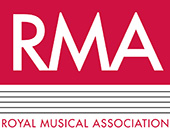https://www.hkb-interpretation.ch/2nd-global-piano-roll-meeting
The 2nd Global Piano Roll Meeting was hosted over three days and three evenings by the Hochschule der Künste Bern (HKB) and the Museum für Musikautomaten Seewen, with additional sponsorship from Stanford University, Faszination Pianola, Schweizer Musikzeitung, and the Swiss National Science Foundation. About 50 delegates from the United States, Europe, Australia, and Japan attended.
The case for treating piano rolls as an artistic format worthy of respect was presented by virtuoso pianolist Rex Lawson (London) in the opening concert on Friday 17th June at Bern Konservatorium. His programme included music on by Bach, Rachmaninoff, and Stravinsky and work written specifically for pianola by Conlon Nancarrow. Lawson demonstrated the artistry and subtlety of which the pianola is capable in skilled hands; it is much more than an inert reproducer of sound, and when played with expertise offers both the possibility of artistic musical expression and an insight into the musical world in which the rolls were produced. They are therefore a valuable source of information for performers, musicologists, and historians of culture and technology. Mr Lawson issued a plea during his performance, repeated in his conference paper, for more musicians to learn how to play the instrument to avoid loss of the artform.
Several notable themes emerged throughout the conference. The history of piano rolls and the collections housing them was a recurring topic. Jerry McBride (Stanford) discussed the rise and fall in popularity of roll lending libraries and what their usage might tell us about popular musical taste during their heyday. Joyce Tang (London) described the collection of 20,000 music rolls held at the Musical Museum in Brentford. The Museum also holds the company archives of the Marshall Piano Company and the Aeolian factory, a potentially rich source of information for future research. Inja Stanovic (London) referred to the Musical Museum’s collection of audiographic Duo-Art rolls, which combined textual and illustrative content in parallel with the audio recording. These rolls are offer us a valuable insight into how the technology was intended to be consumed by its original audience; interpretative text and illustrations on the rolls indicates they were intended to be seen as well as heard, an early example of multi-media production.
Piano rolls as a source of information for nineteenth and early twentieth century performance styles, and its implication for historically informed performance practice was another significant theme. Some highlights of the conference included papers by Thomas Synofzik (Zwickau), who described the YouTube project “Klavierspielen von Geisterhand” (Piano Playing by Ghostly Hands), by which some of its recordings of eminent pianists (including Reinecke, Carreno, d’Albert, Busoni, and Cortot) were made accessible online for the first time. Where more than one recording of the same piece exists, it is possible to compare the pianists’ performance styles by age and nationality. Pianist and musicologist Carolina Estrada Bascuñana (Bern) argued that the piano roll as an early form of digital recording was often preferred in the early twentieth century to acoustic technologies as the performance was considered clearer and more accurate.
Continuing the theme of music and technology, several papers explored recent developments in the fields of roll preservation, digitization and archiving. Peter Phillips (Sydney) offered a brief history of music rolls in the digital age (from the 1970s onwards) and described some of the benefits of transferring data from piano rolls to a MIDI system, as well as some of the challenges of emulating expression and pedal marks in MIDI. Peter Broadwell, Kumaran Arul and Nathan Coy (Stanford) presented Stanford University’s Player Piano Program, aka “Pianolatron”, an accessible web app that matches digital images of rolls with audio playback and allows for real-time adjustments to tempo, dynamics and other expressive features.
Several papers covered the cultural impact of piano rolls and what they might tell us about the societies that created and listened to them. Paul Johnson (El Dorado Hills) introduced the conference to a set of “hot” performances of jazz, blues, and ragtime, genres not commonly associated with piano rolls. Nicholas Williams (Perth, Australia) presented a case study in the development of marketing and advertising of piano rolls, revealing how the reception of the technology changed over time from a novelty or toy to a respectable artistic and pedagogical pursuit. Darius Kučinskas (Kaunas) discussed recent interest in “ethnic” piano rolls produced in the United States for its diverse immigrant communities. These rolls are particularly valuable as many are unique and provide the only recorded documentation of some works; folk music, local composers, and art music by national composers feature heavily in these collections.
The final day took the conference by coach to the Museum für Musikautomaten in Seewen, near Basel. Of particular interest was Christoph Hänggi’s (Seewen) introduction to the Britannic organ, one of the museum’s largest and most spectacular exhibits. The organ commissioned by the White Star Line for RMS Britannic (sister ship of the Titanic) had been thought lost, however it was found “hidden in plain sight” in the collection of the Museum für Musikautomaten. A restoration of the museum’s Welte Philharmonic Organ in 2007 provided access to normally unseen parts of the instrument, and the missing piece of the puzzle; “Britanik” had been stamped underneath the organ’s sound board. Knowledgeable and friendly museum staff took the delegates on a private tour of the museum; particular highlights included a tour of the Salon Bleu showcasing the history of reproduced sound in a domestic setting, and a demonstration of dance hall orchestrions, or miniature orchestras in a cabinet.
The conference ended with a roundtable on plans for future conferences. It was agreed the three-day event, while intense, had been a great success in bringing together interested parties from many disciplines. A third Global Piano Roll Meeting will likely include more recitals, thematic workshops, research snapshots and, importantly, a Conference Dinner.
Ashley Holdsworth Quinn is a doctoral candidate at the University of Glasgow researching the reception of Russian music in Scotland during the early twentieth century.
